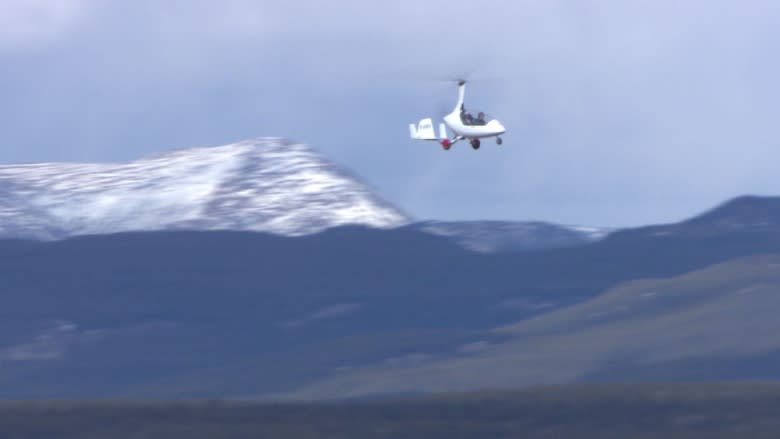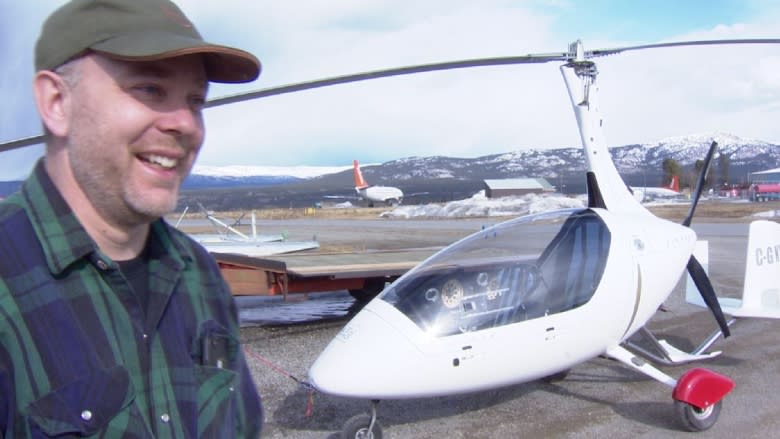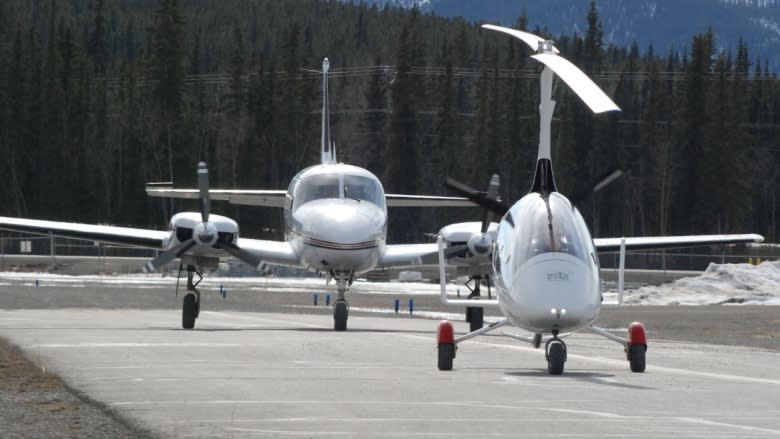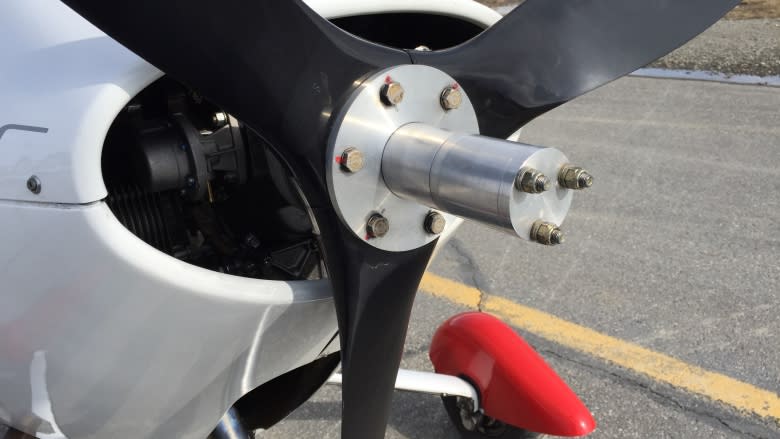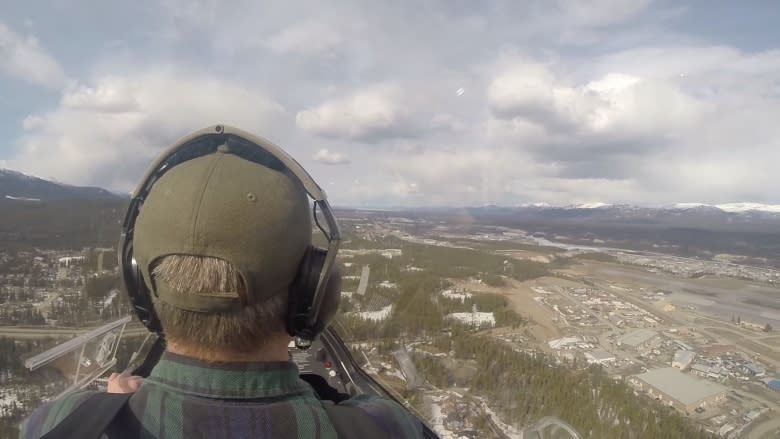Flying economy-class: Could gyroplanes offer Yukoners flights at lower costs?
There's not a lot of leg room, but Yukon pilot Daniel Clunies-Ross says his new gyrocopter is a first-class flying machine.
Clunies-Ross lives outside Haines Junction, and recently invested about $100,000 in a German-made machine that has elements of an airplane and a helicopter.
Only two people can sit in the machine at a time, which behaves like an airplane as its rotors function as a wing. It cannot hover like a helicopter, and requires a short runway to take off and land.
One big advantage is the price.
Clunies-Ross estimates the total cost of flying a gyrocopter is about $50 per hour including maintenance, fuel and insurance costs, less than a quarter of the cost of a helicopter per hour.
The gyroplane requires regular automotive fuel in its 100-horsepower engine. It can carry enough fuel on board for three hours' flight.
The relatively cheap cost has Clunies-Ross thinking about potential uses including Northern tourism, search-and-rescues, aerial surveys or reaching remote sites like mineral exploration camps.
"People who are looking for something a little different, at a little better price point, I think they're going to be interested in something like this," he says.
Obviously, cargo isn't the priority: Clunies-Ross' gyrocopter weighs 292 kilograms and can be loaded to a weight of 500 kilograms. You can barely fit a backpack on board. Its three wheels are no bigger than what you'd see on a wheelbarrow.
However, he says the gyrocopter's bubble provides a panoramic view and the design makes for a relatively smooth flight.
"I do fly fixed-wing and they bounce around a lot. This one, the rotor-disk itself actually absorbs a lot of the shock, so it's much smoother," he says.
Another advantage is that gyrocopters require shorter runways than even the smallest fixed-wing plane.
Transport Canada has not approved commercial use
However, there is one slight sticking point: So far, gyrocopters haven't been approved for commercial use in Canada.
Clunies-Ross usually flies light aircraft with Rocking Star Adventures, a Yukon company that guides tourists above the glaciers of Kluane National Park.
Under current law, he could not charge to bring someone in the gyrocopter on a sight-seeing tour.
The restriction from Transport Canada is unfortunate, says David Sigier, a flight instructor with AirPro Gyro, a flight school based in St-Apollinaire, Quebec.
Sigier says the federal regulation should catch up and allow innovation, especially in cases where gyrocopters could replace helicopters at a fraction of the cost.
"There's an economic potential for something like this that should be explored."

